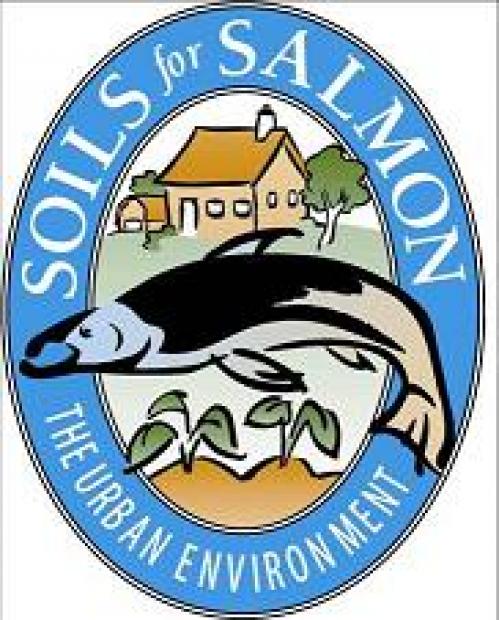
The Washington Organic Recycling Council (WORC) started the Soils for Salmon project in 1999, to help builders and developers preserve native soil on building sites, and restore construction-disturbed soils using compost. Native forests and soils in the Northwest absorb rainfall quickly down into the groundwater, with little runoff. Native soils are biocarbon-rich, sequestering carbon in billions of soil organisms, tree and plant root systems, and slowly-decaying stable organic matter that also promotes soil structure and healthy plant growth. During construction projects, however, soils are often stripped and compacted, resulting in soil erosion and rapid stormwater runoff that damages streams and downstream properties.
The Soils for Salmon project’s “Building Soil” campaign is promoting soil “best management practices” (BMPs) that local governments can adopt as requirements as they update their local codes. The campaign helps builders get ahead of the new regulations, and change site practices now to satisfy their customers.
Building Soil BMPs during construction include:
- Retain and protect native topsoil and vegetation where practical
- Restore disturbed soils to restore healthy soil functions by:
- Stockpiling and reusing good quality site soil, or
- Tilling 2 to 3 inches of compost into poor site soils, or
- Bringing in 8 inches of compost-amended topsoil.
- Loosen compacted subsoil, if needed, by ripping to 12-inch depth.
- Mulch landscape beds after planting.
- Protect restored soils from erosion or recompaction by heavy equipment.
In the last 10 years, the Soils for Salmon project has convinced many building, design and government professionals around the nation not to treat the soil like dirt. One exciting success is the incorporation of the soil BMPs into the new “Sustainable Sites Initiative” (www.sustainablesites.org) of the American Society of Landscape Architects and the US Green Building Council (USGBC). The Sustainable Sites (“SITES”) criteria will eventually be incorporated into the USGBC’s “LEED” green building standards, which are transforming construction around America.
Give for a brighter future
Connect
Join our email list to learn about what we do and how to get involved.